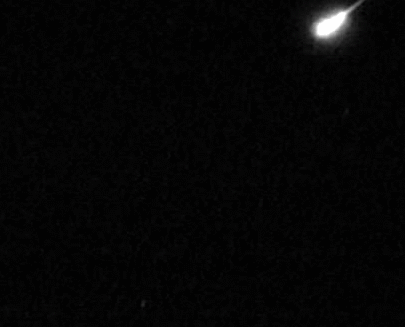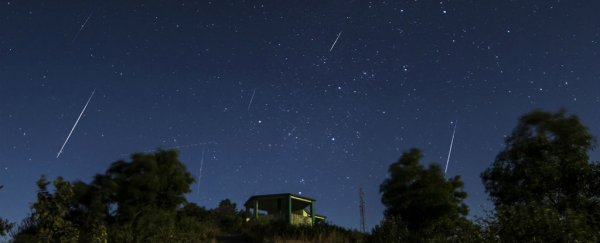Depending on where you are in the world, venturing outside at night to watch one of 2015's best meteor showers will either be pleasant (Southern Hemisphere) or a freezing cold nightmare that only the bravest skywatchers will dare to attempt (Northern Hemisphere).
But if you can find a clear, cloudless patch of sky, viewing the Geminids meteor shower at its peak will be entirely worth it. These meteors tend to be especially bright, prolific, and reliable around this time every year, and with a waxing crescent Moon giving you a dark backdrop, you should be able to get an awesome view this weekend without a telescope.
The Geminids can be seen annually between December 4 and December 17, with its peak activity this year expected to occur between December 13 and 14 for those in the Northern Hemisphere, and December 15 for Souther Hemisphere skywaters. If you can get out under the stars during its peak, the Geminids is expected to deliver an impressive 120 meteors per hour.
Named after the Gemini constellation, which is located between the constellations Taurus and Cancer, the Geminids delivers meteors travelling in bursts of two or three at a time. According to the BBC, they typically travel slower and burn brighter than most other meteors, and leave behind long, luminous trails that can be white, yellow, blue, red or green.
While Northern Hemisphere viewers can start spotting meteors just after sunset, while those in the Southern Hemisphere need to plan for some time after midnight, experts advise that peak viewing time this weekend will be 2am, wherever you happen to be.
"That's because the constellation Gemini - radiant point of the shower - will reach its highest point for the night around 2am (your local time)," Bruce McClure reports for Earthsky.org. "As a general rule, the higher the constellation Gemini climbs into your sky, the more Geminid meteors you're likely to see."
 A fireball Geminid falling earthwards. Credit: NASA/George Varros
A fireball Geminid falling earthwards. Credit: NASA/George Varros
Each year, the Northern Hemisphere tends to see these meteors a bit better than we do down here in the Southern Hemisphere, but the shower is still visible from anywhere in the world. And while it helps to locate the Gemini constellation in the sky so you can spot the meteors where they radiate from, even if you can't find their starting point, you'll have a good chance of seeing something.
"Some people mistakenly think that, since meteor showers have radiant points, you should look in the direction of the shower's radiant point to see the most meteors. Not so! The meteors will appear in all parts of the sky. It's even possible to have your back to the constellation Gemini and see a Geminid meteor fly by. However, if you trace the path of a Geminid meteor backwards, it appears to originate from the direction of the constellation Gemini."
Just make sure you give yourself about 20 minutes to let your eyes adjust to the darkness, and then a viewing time of about an hour. You might even be lucky enough to see Comet Catalina (C/2013 US10) - a blue-green beauty that's currently making a rapid approach towards Earth.
To get your best local times and locations for Geminids viewing, head to the Time and Date website. Australian skywatchers can head here to get the best times for where they're located.
